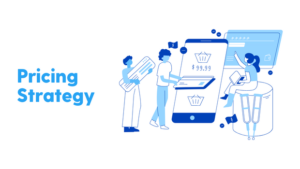Amazon PPC advertising is one of the most effective ways to advertise your products and services on Amazon. However, with so many other brands also advertising on the platform, it can be tricky to stand out from the crowd and drive traffic to your listings. Amazon has made significant changes in PPC advertising with new keyword matching options, better location-based search results, machine-learning algorithms tracking how long it takes people to find a product, future marketing efforts that are targeted by what other competitors are doing, and more.
In this ultimate guide for Amazon PPC advertising, we will give you an overview of how you can use Amazon PPC as an advertising tool. You will learn what PPC ads are, why they are beneficial, how they work with third-party tools like Google Ads or Bing Ads, and how you can get the most out of your campaign.
What are the different types of Amazon Ads?
There are ample Amazon advertising types that help you find, attract, engage, and retain your customers at every part of your sales journey. These include self-service solutions and managed services on and off Amazon.
Amazon PPC
Amazon Pay-Per-Click (PPC) solutions are offered to advertisers, agencies, and self-service portals on Amazon. Under Amazon PPC ad types, we have:
Sponsored Products Ads
Amazon Sponsored Products are PPC ads that enable you to drive traffic to your product listings on Amazon. You can achieve diverse goals with Amazon Sponsored Products and measure your ad performance.
Sponsored Product Ads are a subtle yet influential part of the customer’s shopping journey that they hold real power in enhancing customer experience. They often appear above, below, or to the side of search results or as an ad carousel near the top or bottom of an item’s product page.
These adverts work in the same manner as Google Ads does. You use Amazon search results for advertising a particular product for a specific keyword. These include Kindle Direct Publishing (KDP) authors, Vendors, Professional sellers, book vendors, and agencies.
But these Products must be in one or more categories and should be eligible to qualify as “Featured Offer” to get advertised. The Featured Offer is the offer displayed on a product detail page with an Add to Cart button. Amazon uses performance-based criteria to determine your Featured Offer eligibility and placement status. You can check these ad reports and determine you assess the performance in one view by bringing these data into a warehouse of your choice using our Amazon Sponsored Product connector.
What is the importance of Sponsored Products Ads?
- They are the most popular type of ads on Amazon.
- Sponsored Product Ads are the most seen by customers.
- They are proven to have a high conversion rate (~10%) and increase ROI.
- Sponsored Product Ads are available at every step of the customer’s journey.
Amazon Sponsored Brands
Sponsored Brands Ads are cost-per-click (CPC) ads that showcase your brand creatively to reach and engage new audiences with custom headlines, videos, and images that feature your brand logo and multiple products. These are the first thing that features on the Amazon search results page that a potential customer always sees. On the search results page, Sponsored Brands appear in several locations, including the prominent real estate above the search results. They may also appear on product pages.
These ads appear in Amazon search results and feature your brand logo, a custom headline, and multiple products at the top of the page, are keyword targeted, come with a written headline, and can feature at least three clickable products (or ASINs) at a time. In other words, The Sponsored Brand is a PPC ad designed to increase your brand’s visibility among customers shopping for products like yours.
Sponsored Brands empower sellers to increase brand visibility and sales on Amazon by promoting your brand and multiple products on relevant Amazon shopping results pages, helping drive shoppers to your product detail page or custom landing page, such as your Store. These pay-per-click ads are available to professional sellers enrolled in Amazon Brand Registry.
Why are Amazon Sponsored Brand Ads used
- It attracts TOFU (Top of Funnel) customers to increase brand visibility and sales on Amazon.
- These ads are versatile and help drive shoppers to your product detail page or custom landing page, such as your Store.
- Help create brand awareness as they increase your ads’ reach, efficiency, and performance.
Amazon Sponsored Brand Ads have unique reporting capabilities as they include new ad placements and bidding options during the campaign process and improved ways to monitor performance. You can check these reports in one view by bringing these data into a warehouse of your choice using our Amazon Sponsored Brands connector.
Read more on Amazon Sponsored Products vs Amazon Sponsored brands.
Sponsored Display Ads
Sponsored Display Ads are a self-service advertising product that generates ad creative automatically, and campaigns can be launched quickly on and off Amazon. They only appear as a “Feature Offer” when your products are in stock.
These ads will appear on Amazon’s home page, the search results pages, product detail pages, and third-party websites and apps. They advertise specific items and direct customers to product information pages.
Briefly, Amazon Sponsored Display Ads to help you discover, engage, and inspire to reach relevant audiences throughout their shopping journey with self-service.
It enables customers to drive discovery to purchase by using Amazon’s rich shopping and contextual signals. This will help create brand awareness, consideration, and purchase, thereby winning loyalty with relevant audiences. You can make connections that matter by engaging audiences to browse specific detail pages.
Professional sellers participating in Amazon Brand Registry, merchants, and agencies with clients that sell products on Amazon can use Sponsored Display advertisements. You can check these ad reports in one view by bringing these data into a warehouse of your choice using our Amazon Sponsored Display connector.
For example, Amazon showcases Fire TV display ads that offer advertisers an opportunity to reach customers as they browse and discover new entertainment. Fire TV ads appear as sponsored tiles in the “Sponsored” row on Fire TV. These ads are clickable and can be used to drive the installation of apps, content streams, and other goals.
Amazon DSP
Amazon DSP (demand-side platform) allows you to advertise video, audio, and display ads on the internet. Rather than buying an ad spot, you can reach your target audience outside of Amazon by using Amazon DSP.
Video Ads
Amazon video ads allow advertisers to reach Amazon customers with targeted videos on Amazon’s websites, mobile apps, and Fire Tablet wake screens. You can convey your brand message with an out-stream auto display video for an engaging ad experience.
Custom Ads
These custom ad experiences are produced in collaboration with Amazon Ads account executives.
Amazon Audio Ads (Beta)
These adverts appear on Amazon Music’s free service that runs across desktop, mobile, tablet, connected TVs, and smart speakers (e.g., Echo devices), which are Alexa-enabled.
Amazon Posts
Now, the Amazon posts program is available in beta, allowing you to inform shoppers about your brand through Amazon’s messaging. Customers can discover your brand on Amazon’s brand feed and click through to your product pages. These posts are accessible on iOS, Android, and mobile web.
Amazon Live
You can publish Amazon Livestreams using the Amazon Live Creator app or collaborate with Amazon to create a live stream. Amazon live allows shoppers to discover your brand and see your product features.
Amazon Additional Ad Solutions – Lock Screen Ads
Lock screen ads belong to the cost-per-click (CPC) model available to KDP (Kindle Direct Publishing) authors and amazon book vendors to promote eBooks directly to the customers. You can engage your readers with interest-targeted ads (by genre) while they are on Fire Tablets and Kindle.
Amazon Attribution to evaluate your performance
Though not an advertising solution, Amazon Attribution is an analytics platform that enables brands to evaluate key metrics across multiple channels. With an Amazon Attribution connector, you can track the impact of paid ads, social media, and email campaigns with respective reports in a data warehouse of your choice. This is available for brand-registered professional sellers, vendors, and agencies across the US, and the UK marketplaces.
What is Amazon Marketing Stream (beta)?
Amazon Marketing Stream is a push-based model to transmit near real-time metrics and data from Amazon Ads campaigns to advertisers’ or integrators’ AWS accounts. You can subscribe to the campaign data sets made accessible on Amazon Marketing Stream using your current Amazon Ads API token and your AWS account information. Once a user has subscribed, Amazon Marketing Stream will send hourly performance metrics, including information on budget consumption messages and targeting expression performance by placement.
How does Amazon Marketing Stream help?
- Hourly performance metrics give intraday insights that help optimize your ad campaign. In addition, the sponsored product metrics derived from the Amazon Marketing Stream enable combining targeting expression and ad placement. As a result, these metrics help optimize not just your keywords but also your keywords by placement.
- Advanced API users can manage their budget and consumption and perform advanced optimization using Amazon Marketing Stream’s insights.
- The absence of API throttling, as Amazon Marketing Stream provides push-based information delivery, delivers near real-time data that simplifies complex technical processes such as comparing API metrics with other advertiser metrics.
Who can use Amazon Marketing Stream?
- Tool Providers
- Agencies
- Direct Advertisers (vendors, sellers included)
This feature is still in beta and is only available for users in the North American region- USA, Canada, and Mexico.
What is Amazon PPC (Pay-Per-Click)?
Amazon PPC, or pay-per-click, is an auction-style methodology where advertisers bid on keywords. Amazon PPC is an auction mechanism in which vendors compete for ad space on a search results page by bidding on search keywords. Their exposure and ad ranking are determined by how much they bid and the quality of their ads. Advertisers compete for the greatest advertising slots on Amazon.
When an Amazon customer searches for a product, the sellers who have set the highest bids on relevant keywords for their products win the auction, and their product ads get listed in their chosen position. PPC advertising helps sellers amplify their product sales online. In pay-per-click (PPC) model, there will be no upfront fees as the advertiser only must pay Amazon whenever a customer clicks on the ad. It means you have full control over the budget and do not need to pay for impressions.
With Amazon Pay-Per-Click, you can create a campaign in just minutes with absolutely no advertising experience. Amazon’s campaign launch process is designed to be simple for advertisers of any level of marketing expertise. Sellers use Amazon advertising to generate brand awareness, sales, Amazon Store visits, and much more.
What are the benefits of Amazon PPC ads?
Amazon PPC ads allow sellers to reach the right audience at the right time. They can set a budget and target keywords that have high search volume, but they might not be profitable in the long run so they should be carefully monitored. There are many benefits to using Amazon PPC advertising, including:
Amplified Product Visibility
Amazon PPC will help in getting the new products discovered as it will take a lot of time to organically rank right away. Back in the day, sellers could utilize free product giveaways to kick-start sales and get reviews in the process. Since that is no longer permitted, using Amazon advertising for your product launch is now even more essential. Your ads can help get reviews quicker and increase organic rankings.
Positive impact on Organic Rankings
Using Amazon Sponsored Products is a great way to leverage your sales through ads, but it also positively impacts your organic rankings. Amazon ranks products on several factors but some of the big ones are sales velocity and sales history. If people purchase your product from an ad after entering a search term, it tells Amazon that you are relevant for that search term and should boost your organic ranking for that term. Using Amazon PPC will augment in improving your sales velocity which helps you to rank better organically.
Pay Per Click sales on Amazon have an impact on your organic ranking. The more purchases you generate through PPC advertisements, the higher will be your organic rankings for those products. This is particularly important for products that are new that do not have a previous record of accomplishment of sales. Ideally, you should start an Amazon PPC campaign as soon as you launch a new product on Amazon, while other experts advise you to wait until you have at least three to five reviews.
Progressive Conversion Rate
As it is a known fact that improved sales can also lead to more reviews, which in turn improves listing conversion (higher conversion rates also help you rank higher organically).
Augments Amazon Search Engine Optimization
With Amazon Pay Per Click, you get a detailed list of keywords that customers use to find your products. This information is immensely powerful to use for SEO purposes in your listing title, bullets, description, and backend keywords.
Manual vs Automatic Amazon PPC Campaign
Here are the pros and cons of the Manual Amazon PPC campaign and the Automatic Amazon PPC Campaign:
| Manual Amazon PPC Campaign | Automatic Amazon PPC Campaign |
| Pros | Pros |
| Ideal for users with experience in PPC campaigns as it requires manual setup. | Ideal for users with no or limited PPC campaign experience. |
| Keywords can be manually selected and customized by advertisers which in turn helps maximize ACoS. | Users do not need to get into keyword bidding as Amazon takes care of keyword selection. |
| With manual PPC campaigning, precise keyword targeting with manual bidding, pausing low-performing words, and reducing bids are easier. | Amazon collects data on the user’s behalf when an automatic PPC campaign is run. Experimentation is simpler and a broader approach is taken than a precise, targeted approach. |
| Cons | Cons |
| Manual keyword selection is a time taking process. | Automatic keyword selection gives less control as relevant keywords do not always mean profitable keywords. |
| In case proper keyword research is not done, then the user might end up losing money on irrelevant, non-profitable terms. | The bid amount remains constant for high converting, low converting, and no converting keywords. |
What Is a PPC Auction and How Does It Work?
The Amazon PPC auction process is simple. Each advertiser submits a default bid and competes for ad slots. While the highest bidder’s bid is not necessarily the cost-per-click, it is the bid.
In Amazon PPC auctions, the highest bidder wins the bid auction. Your winning bid, which is usually lower than your actual bid, will be only one cent higher than the next highest bidder’s bid. For example, a keyword like “handbag” has an Amazon bid of $1.50. The next highest bidder offers a bid of $1.00. The cost of the click will be $1.01, which is also the CPC. You can see that CPCs vary widely depending on the product category, marketplace, and ad type.
What are the important Amazon PPC Ad KPIs?
A key performance indicator (KPI) is a metric that helps you understand how your ad campaign is doing keeping in mind your goals. When it comes to measuring key performance indicators (KPI), most sellers track Sales, Profit, and Inventory within Seller Central, and in their ad account, they measure ad efficiency by ACoS only.
The most insightful and useful PPC metrics that brands should include in their KPI to track their growth are:
| KPI | Why is it Important? | How is it calculated? |
| Advertising Cost of Sale (ACoS) | It helps you check if your ads are profitable or not. Also, it helps you understand your ad efficiency against your competitors | ACoS = Total Ad Spend ÷ Total Ad Revenue x 100 |
| Return on Ad Spend (ROAS) | This KPI helps you check whether your amazon PPC ad is profitable. It is also the inverse of ACoS. | RoAS = Total Ad Revenue ÷ Total Ad Spend |
| Cost per Click (CPC) | It helps you understand the competitive landscape and the higher the CPC, the more aggressive the competition is. | CPC is determined in the second price auction. |
| Click-through rate (CTR) | This metric provides you an insight into the relevance of your ad for the targeted audience. | CTR = Number of clicks ÷ Number of impressions x 100 |
| Conversion Rate (CVR) | The conversion rate provides insight into how appealing and informative your product detail pages are. | CVR = Number of orders ÷ Number of clicks x 100 |
Other important KPIs include:
Impressions
The number of times potential customers have seen your ad. However, you are not charged for the impressions. It still gives you an idea of how effective your bidding was. The higher this number, the better.
Clicks
The number of clicks refers to how many you have clicks got on your ad. Each click has its price which is CPC. The number of clicks gives an idea of how much paid traffic you have.
Ad Sales/Total Sales
On average, healthy, and mature accounts spend 10% of gross sales to make 20-30% in ad sales next month. Knowing this ratio on the account and the product level will provide you with a better overall understanding of your PPC efficiency as a brand-growing tool. If your ad sales bring more than 30% of all sales and this number does not decrease month to month, then you should pay attention to the quality of your listings and their organic performance. If the situation is the opposite and your ad sales are less than 20% of your all sales chances, you are not using your ad budget efficiently.
The average statistics for some of the following KPIs were 0.41 percent CTR (Click Through Rate), 9.55 percent CVR (Conversion Rate), and $27.59 for ACoS. According to Ad Badger, Amazon’s average conversion rate of 9.55 percent compares well with the average conversion rate of 1.33 percent for non-Amazon websites for the year 2020.
How to launch an Amazon PPC ad campaign?
Now that we know about the benefits, types, and KPIs (Key Performance Indicators) of Amazon, we can next move on to how to launch a campaign:
- By Optimizing Your Product Detail Pages.
- By Setting up your Campaigns Correctly.
- By placing Variations in a Single Ad Group.
- By running Manual and Automated Campaigns.
- By adding highly converting terms from your Automatic Campaign to your Manual Campaign.
- By setting your Manual Campaign Bids & Budget Higher than your Automatic Campaign.
- By keeping a bid on competitor brands wisely but always bid on your own.
- By setting sufficient maximum daily budgets.
What are the different goals for an Amazon PPC Campaign?
Awareness
Awareness goals focus on expanding your audience so more people discover your brand and products. You want to help customers learn about your brand story and to keep your brand on top of mind while they shop.
Consideration
For consideration, your objective is to engage shoppers as they research your product during the decision-making process before they decide to buy. You must enable customers to understand what sets your brand or products apart from other options, and why should they choose your product over other products while making their purchases.
Purchase
Purchase or conversion goals focus on driving sales. They will help potential customers make the decision to buy your product.
Loyalty
If you focus on loyalty as being your prime objective, then your goal is to engage your existing audience to help them become repeat customers. You are showing them the best reasons for which they will be loyal to return to your brand and make a repeated purchase of products.
Conclusion
Amazon PPC advertising is a great way to get your product in front of customers who are looking to buy it. In addition, you can use Amazon PPC advertising to test different ad copy and landing page versions to see which ones perform the best. Understanding Amazon Advertising Console’s various dashboards and reports will grant insight into the ad performance of your PPC campaigns.
As your business objectives grow, their data needs grow with them. That is where we, Saras Analytics, can help with our eCommerce-focused Data pipeline (Daton) and custom ML and AI solutions to ensure you always have the correct ad data at the right time. Request a demo and envision how reporting is supercharged with a 360° view.













